More than half a million 9-1-1 calls get routed to BC Emergency Health Services for ambulances each year. These calls are answered by Emergency medical call-takers (EMCT) working in three BC Emergency Health Services dispatch operation centres in Vancouver, Victoria, and Kamloops.
In addition to providing 9-1-1 call taking, dispatching, prioritizing and coordinating ground and air ambulance responses 24/7, the three integrated dispatch centres work closely with the BC Patient Transfer Services (BCPTS) to coordinate all inter-facility patient transfers throughout the province.
Emergency medical call-takers (EMCTs) gather critical information from the caller and use approved protocols and systems to assess the patients, while providing calm and reassurance. EMCTs and dispatchers are supported by a clinical team that includes paramedic specialists, secondary triage staff, clinical specialists and emergency transport physicians. Together, this clinical team provides invaluable expertise and oversight that BCEHS teams rely on.
Emergency medical dispatchers use information gathered by EMCTs and determine the appropriate emergency response team/ambulance to send to the scene. While ambulances are en route, dispatchers pass along essential information to the paramedics to help them care for the patient when they arrive.
Patient Transfer Services, which is based in Vancouver, include teams from the Patient Transfer Network (PTN) and the Patient Transport Coordination Centre (PTCC). They help transfer patients to and from medical facilities. Patient Transfer Coordinators triage all inter-facility transfers and consult with both the sending and receiving facility in each case. This medical teleconference process is crucial to getting critically ill or injured patients to the right location as quickly as possible.
Once a patient transfer has been confirmed, it is passed to the PTCC staff, who manage logistics, dispatch ambulance resources, and coordinate transports for critical care – by air and ground. While most of these transfers happen within B.C., some require inter-provincial or even international travel.
Patient Transfer Services also includes a team of community paramedic coordinators who organize the important patient visits
community paramedics do in local communities.
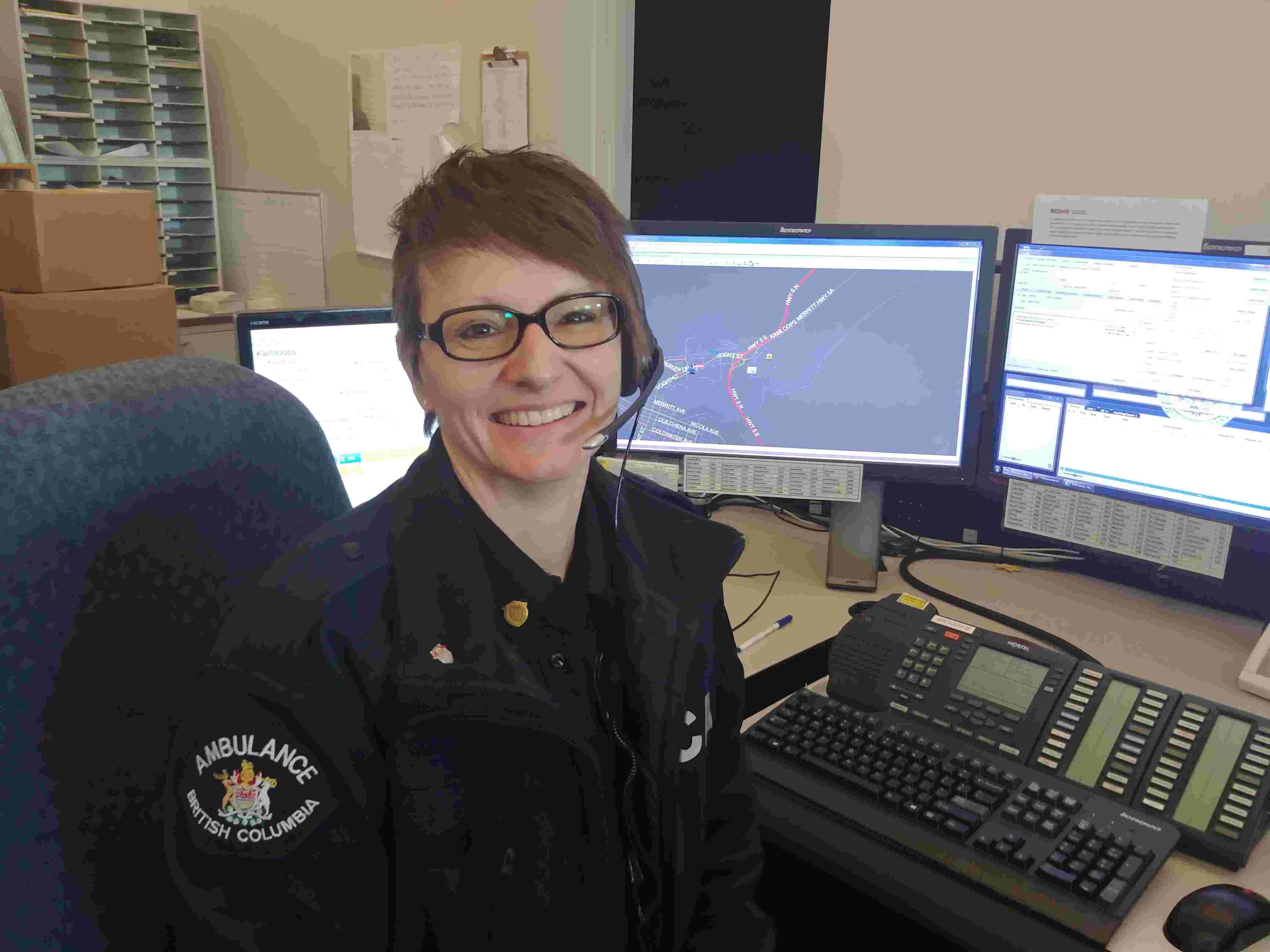 What inspired you to work in dispatch?
What inspired you to work in dispatch?
In 1993, I was exploring a career with the BC Ambulance Service. I was riding along with a paramedic crew and I was fascinated with the voice on the other end of the radio. The dispatcher sounded so in control of the situation and when the paramedics needed some assistance, it was the dispatcher who provided that. When we attended peoples' homes who had called 9-1-1, I thought it would be such an interesting job to be able to help both the public and the paramedic crews.
What do you enjoy most about your work in dispatch?
I find it very rewarding to be able to help people. When someone is having their worst day and they call 9-1-1, I enjoy being part of the chain that provides assistance over the phone and organizes the resources for them. I also enjoy the challenge of working in a fast-paced environment. Dispatching the ambulances is like a big game of chess where we move the pieces around to get the job done in a timely manner. I feel very fortunate to be able to say that I have fun at work.
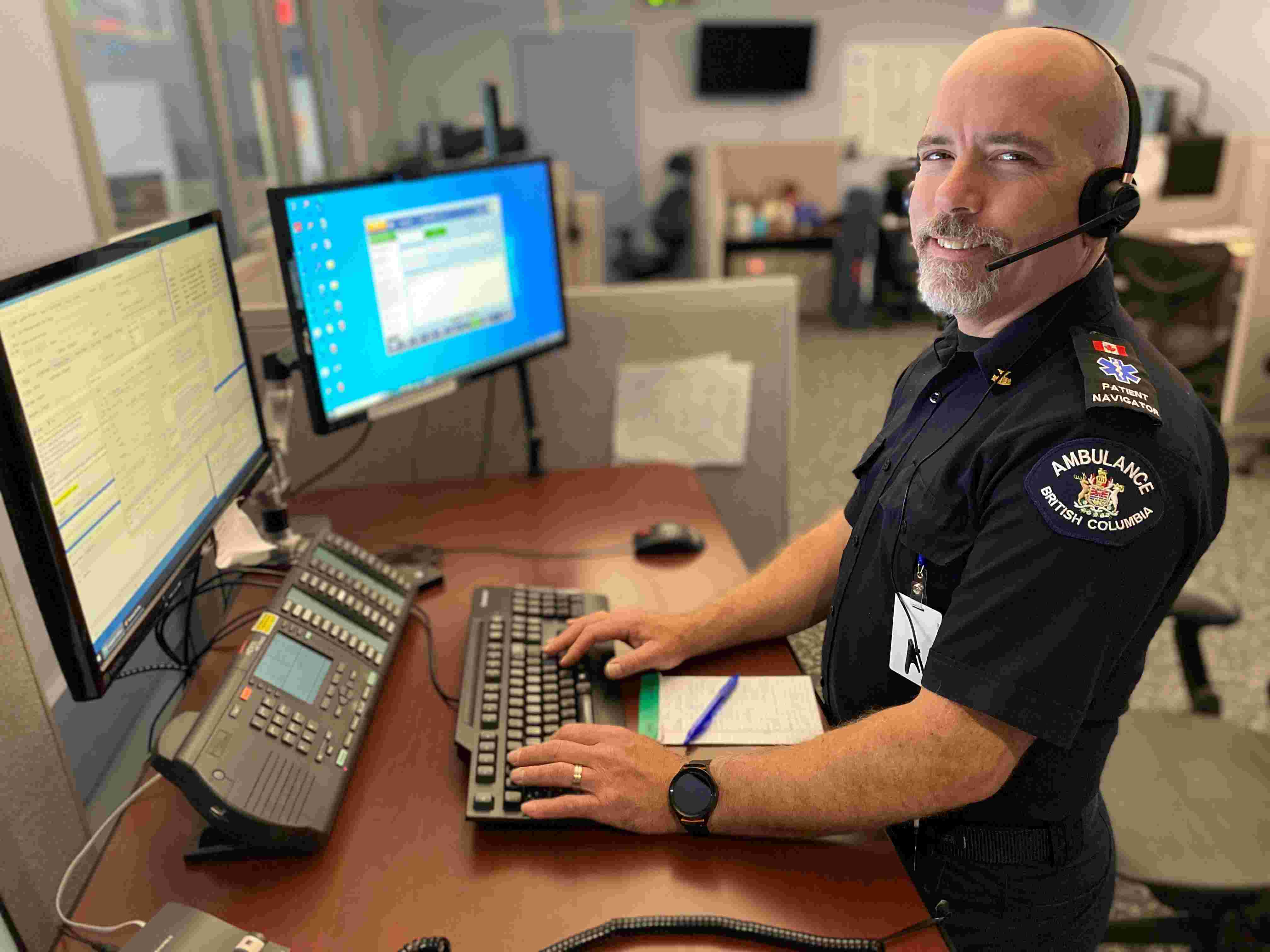 What do you most enjoy about your work?
What do you most enjoy about your work?
What I enjoy about working in the Clinical Hub and secondary triage is the ability to clinically evaluate 911 callers by phone and video call, which preserves paramedic ambulance resources when we can utilize alternate care pathways.
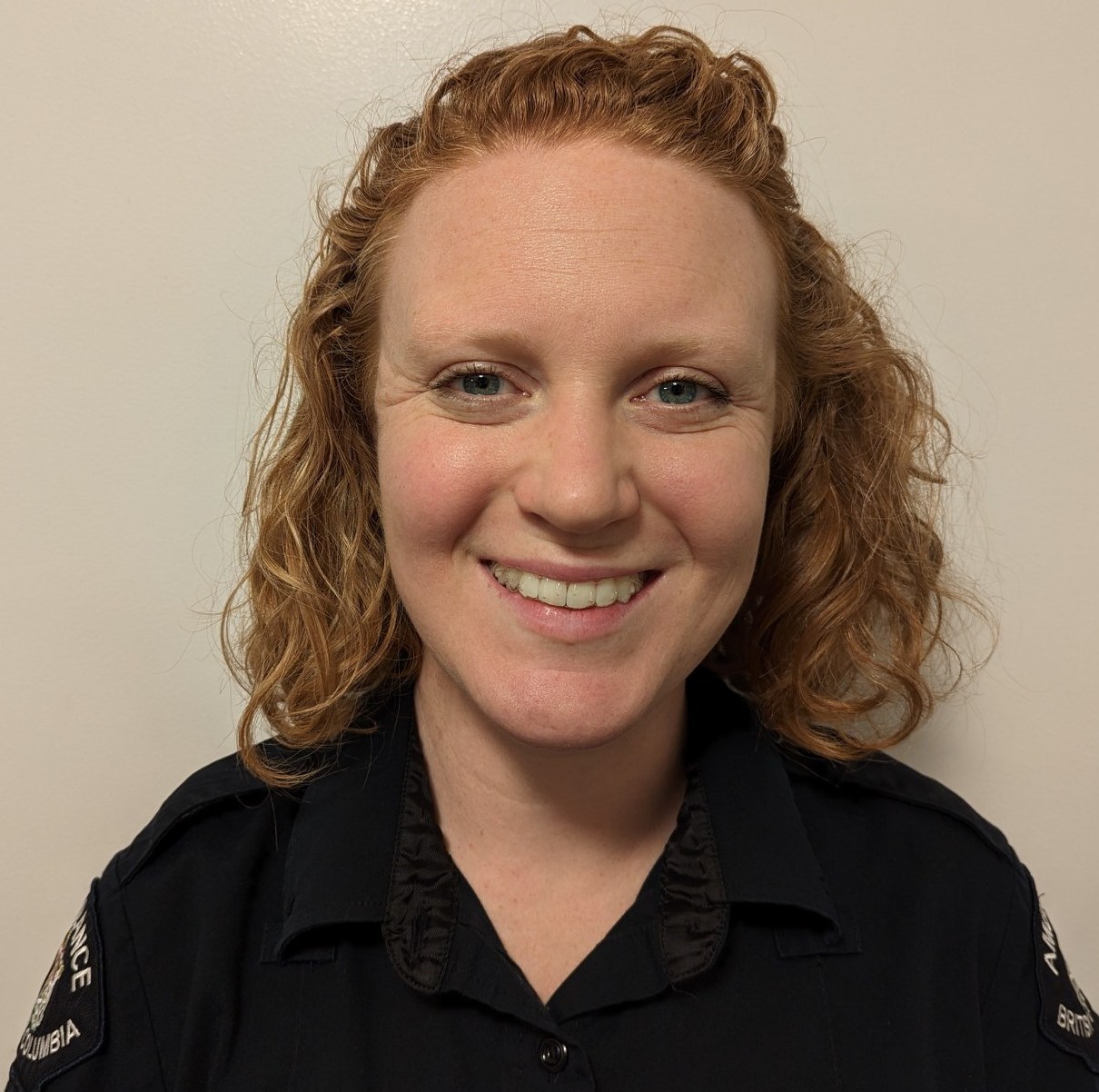 How is the job of an EMCT different from working as a paramedic?
How is the job of an EMCT different from working as a paramedic?
You can’t see and hold anything, you are just basing your job on how the caller is describing the patient and situation. The most challenging thing is that you can only use your voice and your questions to calm somebody down. It’s cool to see the other side to see all the information from the call before the caller hangs up. It’s very fast-paced.
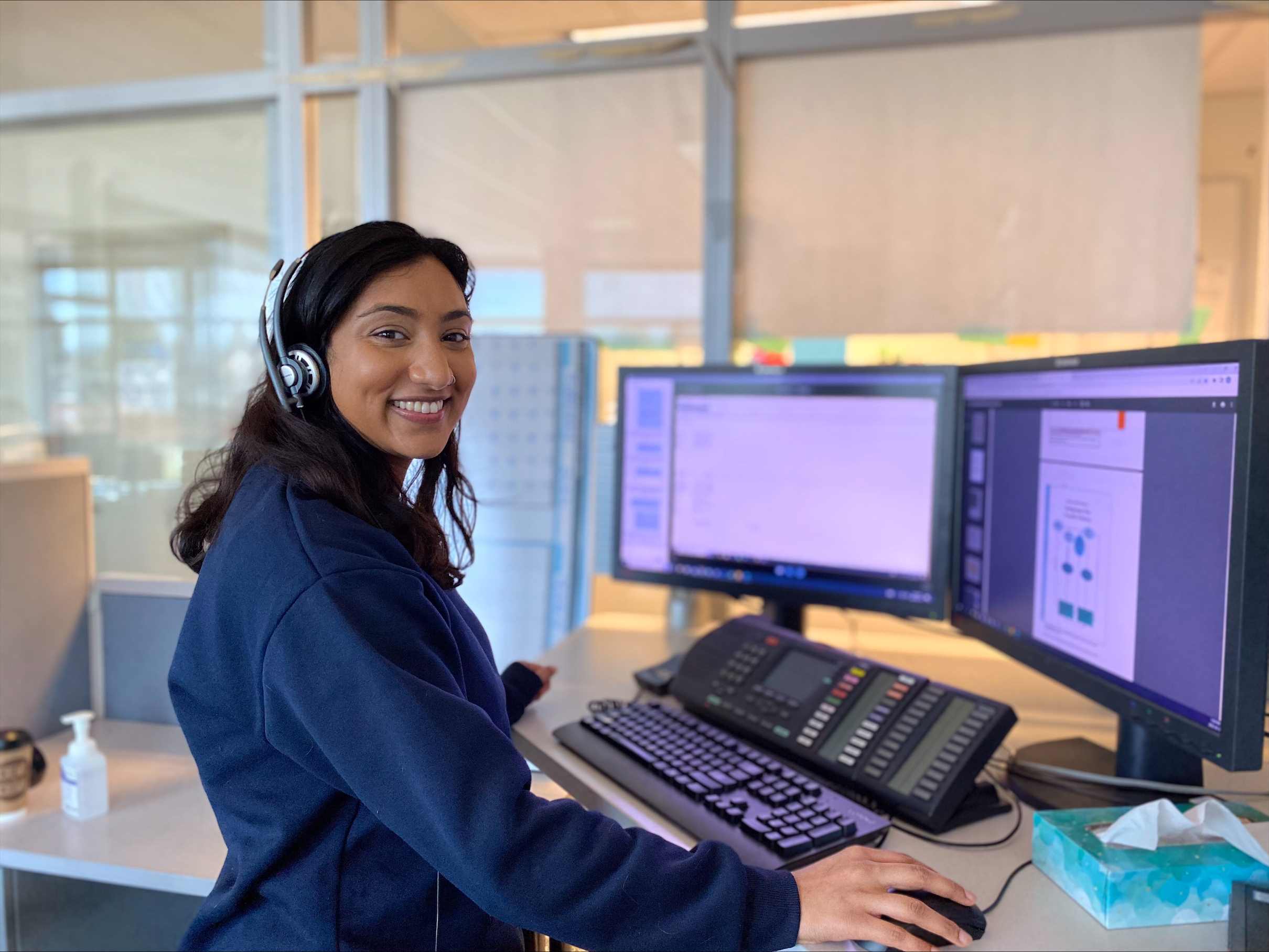
What do you enjoy most about your work?
I have a great admiration for my colleagues; our team consists of supportive and brilliant people who are highly dedicated to offering the best patient care. This is vital as we transfer patients throughout the province, across health authorities and internationally.
Each day offers new challenges with complex patient needs, as we liaise with a variety of physicians and specialty services within B.C. and worldwide. This includes working with hospital access offices (which confirm bed availability in hospital wards), keeping up with changes in policies and procedures while booking transfers within timeframes based on patient care needs. The scope of our job and the range of responsibilities is challenging as well as rewarding as we are an integral part in a patient’s care journey.
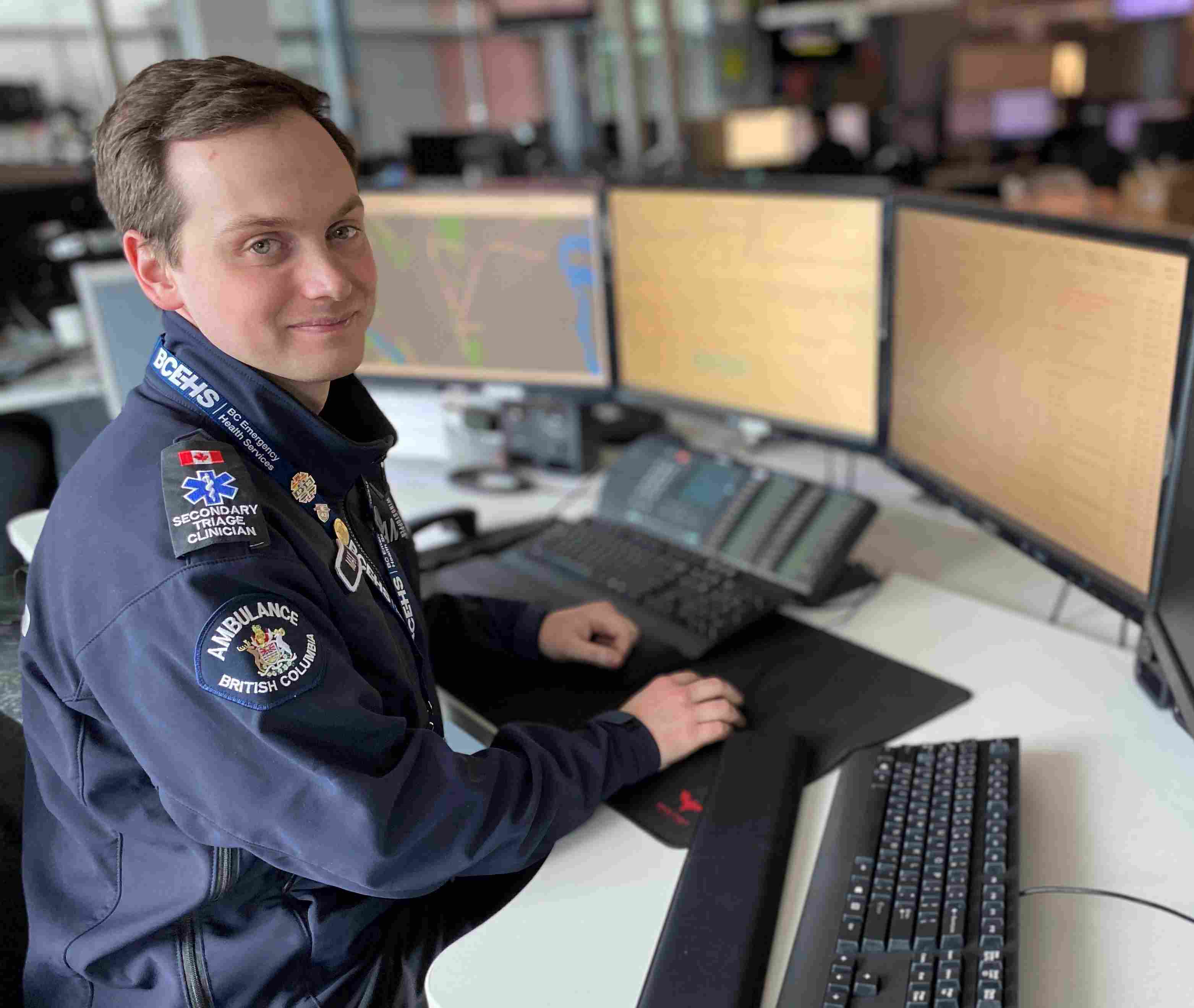 What does your work as a secondary triage clinician involve?
What does your work as a secondary triage clinician involve?
My daily work flow involves monitoring the secondary triage 9-1-1 queue, conducting virtual patient assessments via telephone or video conference, reviewing 9-1-1 ambulance calls for appropriate clinical response model (CRM) upgrades, consulting and collaborating with the paramedic specialists and dispatch teams, and advocating for our patients needs utilizing BCEHS and PHSA resources such as Urgent Primary Care Centre (UPCC), and taxi conveyance pathways.
What do you enjoy most about your work in the Clinical Hub?
I enjoy being challenged by my job and peers everyday, collaborating and learning from our secondary triage, dispatch and paramedic specialist team members, and also expanding the reach of primary care paramedic practice through new resources, clinical pathways, and software platforms such as ‘GoodSAM’ Video consulting. I am humbled by the opportunity to connect, listen and advocate for our patients living in either rural, remote or indigenous communities throughout the beautiful province of British Columbia while providing a high level of innovative care.
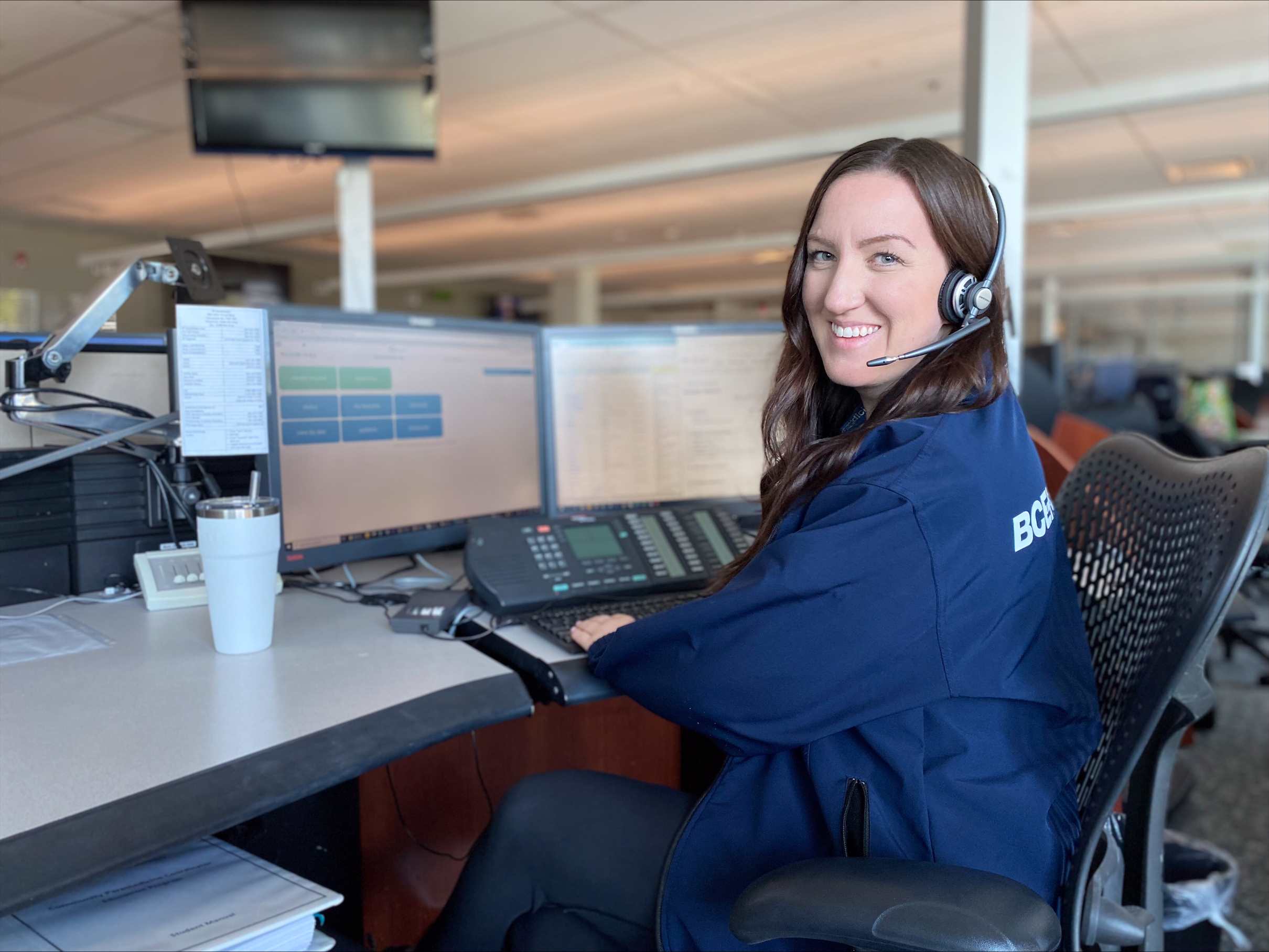 What do you enjoy most about your work?
What do you enjoy most about your work?
What I enjoy most about my work is the close-knit team that I get to work with every day. This team is special in the way that everyone from the director, Amy Poll, managers, CPs (community paramedics), project team and CP coordinators have a valued voice in the program and work collaboratively to support patients’ needs.
As CP coordinators, we are lucky enough to talk to our CPs every day; really giving us a close look at their day-to-day activities and how they positively impact the communities they work in. After doing a ride-along with our Lake Cowichan CP, Mike Wright, the appreciation I had for this program grew substantially. The trip really showcased how the CPs truly impact the lives of their patients and the relationship they have with the Health Care Teams—I feel very lucky to be a part of that.

